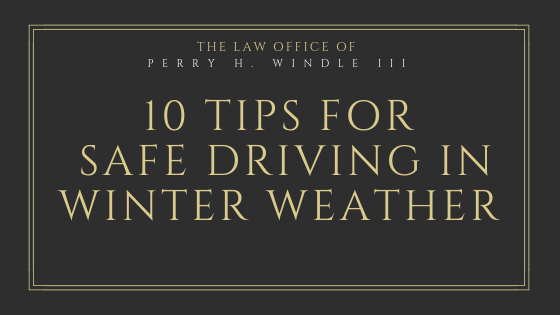During the winter, snow and ice can create difficult driving conditions.
Take some time to look over the following winter weather driving tips. Your safety is important to us. By preparing, you can help prevent future weather-related car accidents.
Keep Your Gas Tank Half Full
In the winter, it is important to keep a full gas tank. Condensation naturally forms in the empty space of a gas tank. When the temperature drops, this condensation can freeze. This could keep your car from starting or damage the fuel lines.
Don’t Use Cruise Control
When you are driving on slippery roads, it is important to always be in complete control of your car. Avoid using cruise control in these situations. This will help you have more control in case you need to quickly deal with an icy or snowy patch.
Always Wear a Seatbelt
This doesn’t only apply to winter weather. It is the law in Tennessee that everyone (driver and passengers) wear a seatbelt when a car is in motion. This is especially important in the winter when you are driving over slick roads.
Check the Weather Report
Before making a long road trip, check the weather report. If the forecast is calling for unsafe conditions, cancel or delay your trip if possible. It is better to arrive late than to get in an accident on your route.
Check Your Tire Pressure
The cold weather naturally causes tires to deflate. It is unsafe to drive with low tire pressure. So, check your tire pressure regularly and refill them whenever necessary.
Don’t Panic
If your car starts to swerve on an icy road, don’t panic. Ignore the urge to slam on your brakes or turn the wheel sharply. Instead, try to slow down by easing up on the gas pedal. It is better to use your brake sparingly when driving on ice. Remember, your Anti Lock Brakes (ABS) don’t work well on ice.
Leave Room
It is always important to leave room between you and the car in front of you. When driving in winter conditions, you should increase this distance. Leave about three times as much space between you and the car ahead of you. This gives you plenty of room to slow down and stop if necessary.
Keep Your Windows Clear
Many of us feel tempted to drive before our car windows are completely defrosted. But, it is unsafe to drive with blocked windows. Give yourself extra time to defrost and scrape your windows during the winter months.
Accelerate and Decelerate Slowly
When driving in the snow or ice, it is important to accelerate and decelerate slowly. You need to have complete control over your car during these conditions. Also, it is important to use your brakes sparingly while driving on ice. So, drive slowly and ease off the gas (instead of slamming on the brakes) to stop.
Stay Home
If you can, avoid driving all together during bad conditions. If you don’t need to leave the house, stay home. Wait until the roads are clear and the weather improves to drive.
If you are involved in an automobile accident and you want to discuss your options, contact Perry H. (Chip) Windle III today. He is an experienced lawyer who is ready to help you with these matters.


Recent Comments